theme 2: the two hemispheres
1/47
There's no tags or description
Looks like no tags are added yet.
Name | Mastery | Learn | Test | Matching | Spaced |
|---|
No study sessions yet.
48 Terms
what are the two hemispheres?
the two parts, left and right of the cerebral cortex
what is special about the two brain hemispheres?
they each control the contralateral side of the body
what is lateralization?
the division of labour and the tendency of some neural functions to be specialized on one of the two hemispheres
what are exceptions of lateralization?
the trunk is and facial muscles are controlled by both sides, auditory information is sent to both hemispheres (but they each focus more on the contralateral side)
which hemisphere is dominant for speech production?
the left in 95% of right handers and 80% in left handers
how do the two hemispheres communicate?
connected by the corpus callosum, the anterior commissure, hippocampal commissure and other small commisures
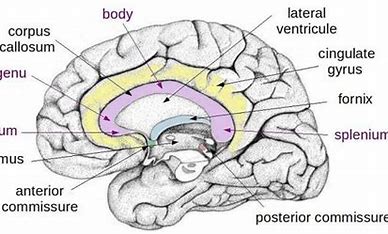
what is the planum temporale?
section of the temporal cortex, part of Wernicke Area→ larger in the left hemisphere for 65% of people
involved in speech processing
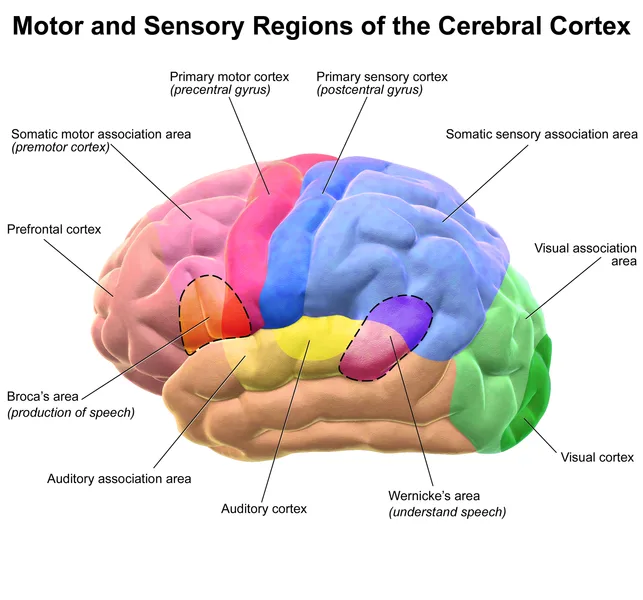
what happens during development regarding speech processing and the two hemispheres?
kids use their right hemisphere more than adults during speech → as they grow older they surpress the activity from the right one and start using the left one
how are the two hemispheres involved in visual processing?
left hemisphere receives visual input from the right visual field → visual information from the right visual field goes to the left retina of each eye which connects to the left hemisphere
right hemisphere receives visual input from the left visual field → visual information from the left visual field goes to the right retina of each eye which connects to the right hemisphere
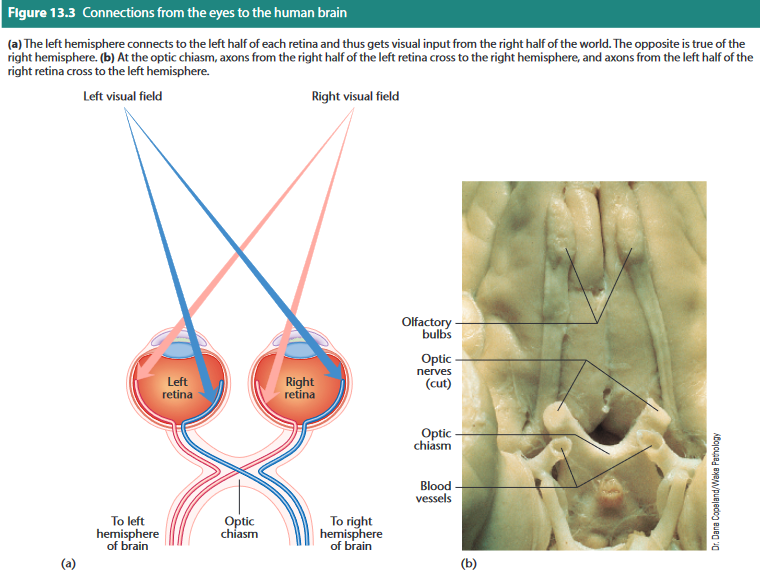
what happens at the optic chiasm?
one axon from each eye crosses over to the opposite side of the body (eg. from the left eye the axon from the right retina crosses over to the right side of the body)
what is epilepsy?
episodes of excessive synchronized neural activity in the brain leading to seizures
what is the focus?
the part in the brain where the epileptic seizures begin → removed for treatment if possible (not possible when there are several foci or when its in an area crucial for language)
how is epilepsy treated when the focus cant be removed?
the corpus callosum is cut → that way the epileptic activity cant go from one hemisphere to the other => the seizures only occur on one side of the body and occur less frequently
what is the split brain syndrome?
people who underwent surgical removal of the corpus callosum → maintain their intellect and can use both hands together on easy tasks but struggle to use both hands in unfamiliar tasks
what did Roger Sperry’s research look like?
showed that peoples brain hemispheres without corpus callosum act independently like seperate brains; there is no communication
people were sat in front of a board with a dot → words were briefly shown on either side of the dot
they could only remember and articulate which word they saw with their right eye (processed by their left hemisphere)
they couldnt remember the word they saw with their left eye (processed by right hemisphere) but they could select the right object without knowing why
=> shows that right hemisphere is capable to recognize and understand language but not to articulate or remember it

what has been found out about the development of the corpus callosum?
it develops slowly and matures significantly beween 3 and 5 years
→ 3 year olds made more errors when feeling two fabrics with both hands and judging if they are the same than 5 year olds did (lacking communication between the two hemispheres)
why is the left hemisphere like and interpreter?
if it doesnt know what and why the right hemisphere is doing something it finds explanations
eg. the right hemisphere is making us feel happy → the left hemisphere will think we saw something beautiful
what things are associated with the right hemisphere?
spatial orientation
emotions
humour and sarcasm
better at detecting lies
increased activity in right prefrontal cortex is assoicated with depression
what did myers and sperry found out in their experiments with cats?
each hemisphere functions independently when communication is cut (optic chiasm and corpus callosum. thing learned with one hemisphere had to be completely relearned with the other hemisphere
in Sperrys research what happened when people saw something on the right?
the left hemisphere could remember and say what it saw and consciously pick the right object
In Sperrys research what happened when people saw something on the left?
the left hemisphere that would be able to communicate ehat it saw didnt see anything so the person reports not having seen anything; the right hemisphere can still somehow without words communicate what i saw by picking the right object (the left hemisphere doesnt understand)
what is the helping hand phenomenon?
left hand, controlled by the right hemisphere, can perform actions without the individual's conscious awareness or intention, often conflicting with the right hand's actions.
what is cross cuing?
non-verbal cues are being used by the right hemisphere to externally communicate with the left hemisphere (eg. frowning, nodding)
what is the visual completion phenomenon?
the brain fills in missing visual information → in people with split brain syndrome each hemisphere is like a person with a scotoma (partial blindness) filling in the other half of the visual field
what is the chimeric figure test?
people with split brain syndrome are shown chimeric faces (two different halfes put together into a face) briefly, the left hemisphere not having seen the other half completes the face so its perfectly symmetrical and vice versa
what did marc dax find out?
most of brain damaged people with speech problems have the damage in the left hemisphere
why is the inferior prefrontal cortex in the left hemisphere also called Broca areal?
because Broca found out that damage in that specific area led to problems in speech comprehension and production
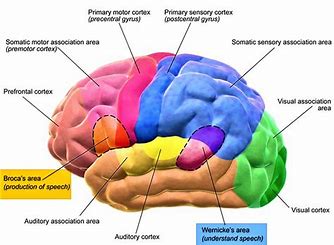
what did Hugo Karl Liepmann find out?
Aphasia is almost always associated with left hemisphere damage, even though symptoms are bilateral
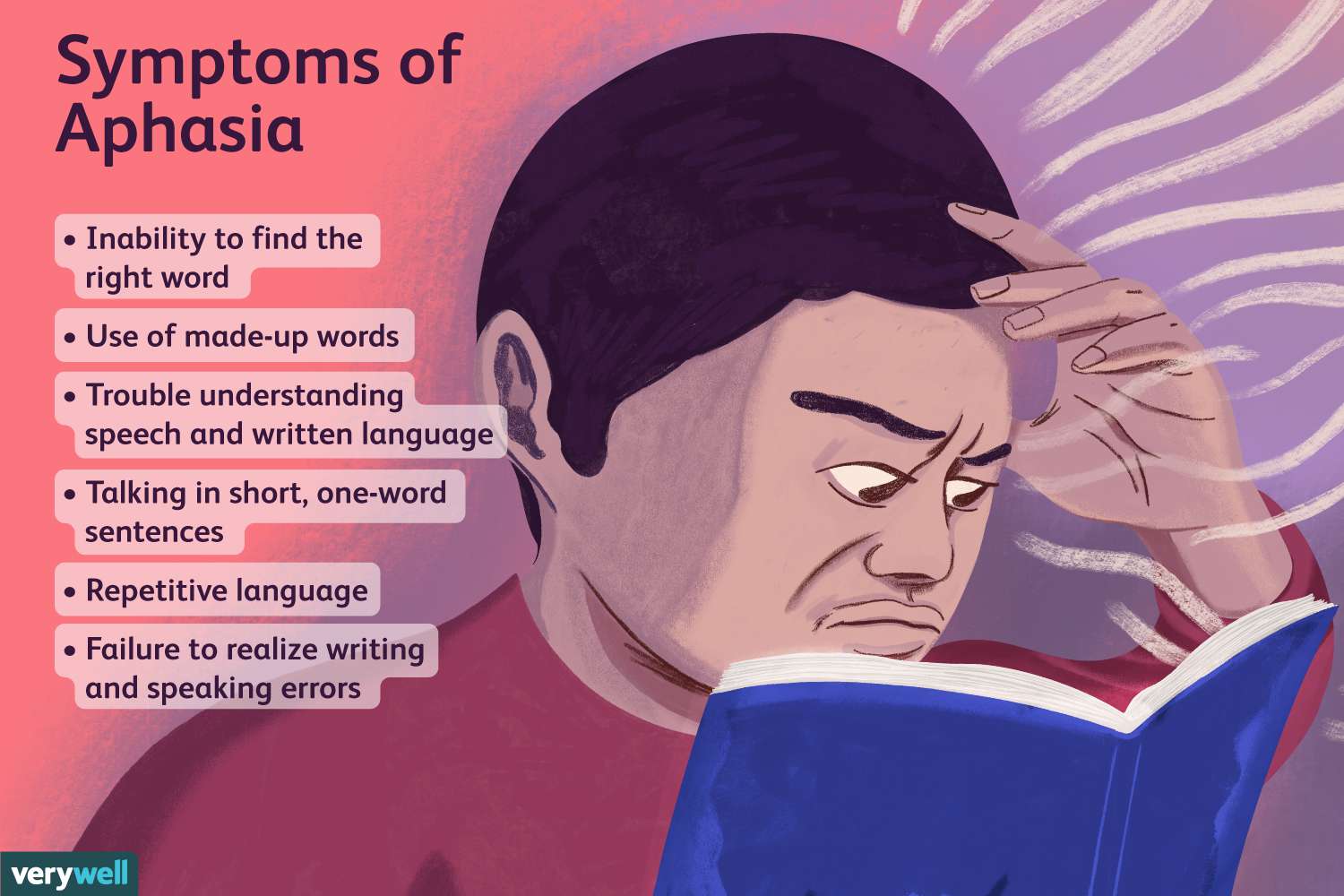
what is cerebral dominance theory?
the theory that there is one dominant hemisphere and one fulfilling a minor role (left is usually referred to as dominant)
what are three tests to assess the functions of each hemisphere and find out which is the one responsible for speech
sodium amytal test
dichotic listening test
functional brain imaging
how does the sodium amytal test work?
injecting sodium amytal in the cartoid artery on one side of the neck to anesthisize the hemisphere on that side → perosn the performs verbal tests ( if the hemisphere specialized on speech is anesthesized → usually the left one; the person will be mute for some time and make many error when speaking)
how does the dichotic listening test work?
person is hearing two different digit sequences through each ear and has to try to repeat as many digits as possible → people will recall more digits from the ear that is connected to the hemisphere dominant for auditory processing (eg. if right one is dominant they wil, recall more digits from the left ear)
who is less predictable in which hemisphere is dominant for speech?
left handed people (sinistrals)
what effect does early brain damage to the left hemisphere have on speech specialization?
it decreases the left hemisphere dominance in sinistrals and ambidextrals by 30%
what is levy’s hypothesis?
he believed that mens brain are more lateralized → not supported
which hemisphere is more dominant for ipsilateral movement?
the left
what were the differences in the dichotic listening test with digits and melodies?
left hemisphere was more dominant when digits where presented , right hemisphere was more dominant when melodies were presented
how is memory linked to the two hemispheres?
left seems to be more dominant for verbal memories and right for non-verbal memories
what are the two different approaches of linking memory and the hemispheres?
linking the hemispheres to specific memory processes or linking the memory processes of the different hemispheres to different materials
what are the two premises of the evolutionary theory of lateralization?
its advantagous for related functions to be loctaed in the same hemisphere
its advantagous to divide the functions into the two hemispheres to avoid redundancy
what are the three different theories on the evolution of lateralization?
analytic synthetic theory
motor theory
linguistic theory
what does the analytic-synthetic theory suggest?
two different modes of thinking that are divided into the two hemispheres
→ analytical : rational, logical, analyzing, attaching verbal labels
→ synthetic: organizing, processing
what does the motor theory suggest?
left hemisphere is not specifically specialized on speech but on motor function of which speech is a part
what does the linguistic theory suggest?
language is the fundamental specialization of the left hemisphere
is handedness heritable?
partly heritable, especially through the mother
what is associated with left-handedness ?
greater risk of mental disease like schizophrenia, epilepsy and autism
neural tube defect and so e type of cleft lip and palate
perinatal stress
dyslexia
more often found in very successful musicians and athletes
high IQ
language fluency and retention
bilaterality of cognitive processing
possibly larger corpus callosum → greater hemispheric connectivity
what could affect left handedness?
winter months → low vitamine D and immune mechanism
elevated testosterone levels during pregnancy could lead to loss of callosal axons
what is the imbalance hypothesis of affective diseases?
left is more involved in mania and right more in depression